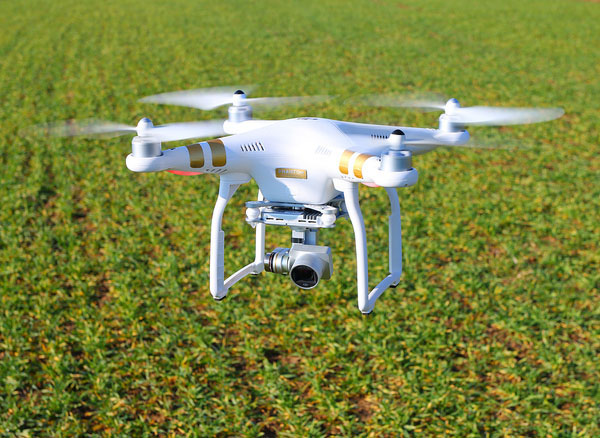By Karen Abrams, MBA
By the year 2050, the population of the world will increase to 9.7 billion. If we are to realize the goal of eradicating hunger, the current global level of food production will have to be doubled. This goal must be accomplished in an environment where water levels are receding, available arable land is diminishing on account of the expansion of cities and towns and global warming is wreaking havoc with the environment. Contextually, risk managers and strategists must begin to take into account that fact that farming contributes significantly to greenhouse gases (GHSs)
In 2011 farms emitted 6 billion tonnes of GHGs, approximately 13 percent of total global emissions. Those numbers make the agricultural sector the world’s second-largest emitter, after the energy sector. Most of the farm-related emissions come in the form of methane (CH4) and nitrous oxide (N2O). Cattle belching (CH4) and the addition of natural or synthetic fertilizers and wastes to soils (N2O) represent the largest sources, making up 65 percent of agricultural emissions globally. Arising out of these challenges, risk managers and strategists are today looking to precision agriculture as the way forward for the environmentally responsible increase of agricultural yield on existing farms, the aim being to feed the world’s growing population whilst limiting damage to the environment.
Precision farming requires the use of technology tools to generate the farm data that helps farmers to make sound, environmentally responsible decisions. These decisions might lead to the optimization of inputs such as water, fertilizer, and pesticides so as to enhance productivity, quality and yield while minimizing pests, diseases and environmental damage. Precision farming assumes that different parts of a field, need to be treated differently because of their differences in soil, sun, slope and other ecological factors which might impact field yield.
The push for technology improvements in agriculture designed to increase production or reduce the workload of the farmer is not a new phenomenon. Over the past centuries, farmers worked the fields by hand or by Ox or horse drawn equipment; humans were enslaved and forced to work as farm labourers or indentured labourers and farm hands were contracted to perform the backbreaking labour associated with farm work; all of this was designed to increase farm yield, reduce the costs of production, improve profits and reduce the workload of farm owners. Today, farmers still use paid labour but they increasingly use larger and faster tractors, combines and plows, upgrades that have helped many farmers to expand ownership and improve management of mega farms.
Even in the face of recent technology improvements, the problem of the future remains an exponentially increasing population faced with farms producing at a relatively constant rate over the years. This problem can only be solved if existing farms use methods that realize significant increase in yield on existing farms while reducing costs of production.
Precision agriculture is a farm management concept which responds to intra-field variations. It relies on new technologies like sensors, drones, satellite imagery, GPS, information technology and other geospatial tools. The first step is to use these tools to observe variability to determine the causes of said variability. Sensors can be used to monitor and measure moisture content and temperature of soil and surrounding air. Satellites and drones can be used to generate real time images of individual plants and are usually processed and integrated with sensor and other data (like weather) to provide guidance for immediate or future farming decisions. These data sets inform decisions like which parts of the field to water, where to plant a particular crop to increase yield, where to apply particular fertilizer rather than across an entire farm. Better farming decisions save money, time and resources and lead to increased yield per hectare.
Challenges For Small Farmers
Mega-farm owners are able to afford costly and sophisticated machinery, including tractors, which are connected to the internet and which collect critical geo-reference information including soil characteristics, yield locations and greenness of plants. This information is sent in real time to big data firms which then run algorithms to analyze the information, and send back agronomic instructions to the machines which farmers can automatically apply in the fields. This technology and the advantages that it provides is entirely out of the reach of the small and medium sized farm owner. They lack both the finances to afford such equipment as well as the knowledge to operate them. They also lack the resources to recruit experts to provide them with full-time support. Even in instances where some equipment may be available they may find that supporting tools like internet access may not be available in their communities.
Recent changes in the agro-technology sector including lower cost sensors, inexpensive cloud data storage, and massive amounts of technology research focused on yield improvement will eventually allow small farmers to lease complete end to end and lower cost solutions which will help them to reduce expenditure on fertilizer, pesticides and labour while increasing their yield per acre. Disruptive and lower cost technology solutions will soon be available to owners of small and medium sized farms the way cell phone technology now means that phone ownership is ubiquitous in the developing world.
All of this, of course, offers some hope that despite the disturbing portents of global population growth and attendant concern about the likelihood of food shortage and its likely consequences for the survival of significant sections of the global population, technological developments and the strategic application of their outcomes to the agricultural sector may well roll back those apocalyptic predictions.
\
Karen Abrams is a Co-Founder of STEM Guyana










